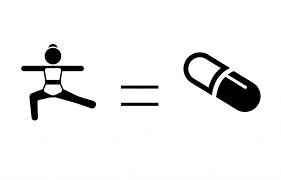WHAT ARE THE BENEFITS OF EXERCISE?
- Improved muscular and cardio respiratory endurance
- Improved strength
- Improved bone health
- Reduce the risk of hypertension, coronary heart disease, stroke, diabetes, various types of cancer (including breast cancer and colon cancer), and depression
- Reduce the risk of falls
- Assist with energy balance and weight control

HOW MUCH EXERCISE SHOULD ADULTS BE GETTING?
Physical Activity Guidelines
18-64 years
- Doing any physical activity is better than doing none. If you currently do no physical activity, start by doing some, and gradually build up to the recommended amount.
- Be active on most, preferably all, days every week.
- Accumulate 150 to 300 minutes (2 ½ to 5 hours) of moderate intensity physical activity or 75 to 150 minutes (1 ¼ to 2 ½ hours) of vigorous intensity physical activity, or an equivalent combination of both moderate and vigorous activities, each week.
- Do muscle strengthening activities on at least 2 days each week.
65+
- Older people should do some form of physical activity, no matter what their age, weight, health problems or abilities.
- Older people should be active every day in as many ways as possible, doing a range of physical activities that incorporate fitness, strength, balance and flexibility.
- Older people should accumulate at least 30 minutes of moderate intensity physical activity on most, preferably all, days.
- Older people who have stopped physical activity, or who are starting a new physical activity, should start at a level that is easily manageable and gradually build up the recommended amount, type and frequency of activity.
- Older people who continue to enjoy a lifetime of vigorous physical activity should carry on doing so in a manner suited to their capability into later life, provided recommended safety procedures and guidelines are adhered to.

FACTS FROM THE WORLD HEALTH ORGANISATION
- Insufficient physical activity is one of the leading risk factors for death worldwide.
- Insufficient physical activity is a key risk factor for noncommunicable diseases (NCDs) such as cardiovascular diseases, cancer and diabetes.
- Globally, 1 in 4 adults are not active enough.
- More than 80% of the world’s adolescent population is insufficiently physically active.





